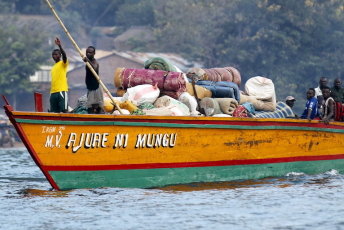Synthetic drug use has increased in Africa. Drugs are more accessible and their reach is wider than ever before. The World Drug Report outlines a rise in the trafficking and consumption of synthetic opioids, amphetamine-type stimulants (ATS), and new psychoactive substances (NPS), and highlights the multidimensional crisis posed by growing drug use in Africa.
The African Union’s (AU) Plan of Action on Drug Control and Crime Prevention (2019-2023) was introduced in 2019 to curb controlled and non-controlled substances’ consumption and trafficking in Africa. The plan calls for a focus on countering the availability and use of NPS and ATS (including their sale via the internet), and stresses the importance of inter-regional forensic drug testing cooperation.
ENACT’s 2018 forecast on drug demand projects that 14 million more people will be using drugs in sub-Saharan Africa by 2050. More specifically, the past few decades have seen the number of people using prescription opioids for non-medical purpose more than triple in West Africa. This trend is replicated in other parts of Africa to a lesser extent.
Between 2015 and 2019 almost half of all African countries reported an increase in the seizures of the synthetic opioid Tramadol being trafficked for non-medical use, an increase of between 13 to 112 tonnes, according to the United Nations Office on Drugs and Crime (UNODC) Global Synthetic Drugs Assessment 2020: Regional Overview for Africa. Tramadol is trafficked to countries in West, Central and North Africa, mainly from Asia.
The UNODC assessment also reports that the MDMA (Ecstasy) market in North and Southern Africa is growing, with annual increases in the amounts of the drug seized between 2014 and 2018. Methamphetamine manufacture in West and Southern Africa has also expanded.
The AU action plan incorporates this increased use and trafficking of synthetic drugs, prioritising the problem alongside cocaine and heroin trafficking in several ways.
Firstly, the plan advocates tackling demand reduction and the health of drug users, focusing on prevention and treatment, reducing the harms associated with drug use and implementing alternatives to punishment for drug use.
However very few countries appear to have taken active measure to implement these initiatives. The Global State of Harm Reduction 2020 says opioid agonist therapy, where methadone injections or tablets are administered to prevent withdrawals from and reduce cravings for opioid drugs, is available in only eight countries. Needle and syringe programmes exist in only 10 countries.
In addition, in most AU member states, addressing the problem through harm reduction is still too often perceived as condoning drug use. Effectively implementing this pillar of the AU Action Plan would require a change in mindset from punitive measures to focusing on harm reduction and public health policy responses.
Secondly, the plan advocates reducing drug supply through criminal justice reform, crime prevention and countering drug trafficking enablers, such as corruption and money laundering. This reform includes decongesting prisons by handing down non-custodial sentences for drug users and reserving the harshest punishments for high-level perpetrators of drug crimes, such as traffickers.
To address trafficking, improve law enforcement responses and enhance intelligence sharing, the plan calls for international cooperation in combating transnational organised crime. This is in line with the recommendations made by the UNODC Global Synthetic Drugs Assessment report of 2020.
Thirdly, the action plan calls for national epidemiological surveillance on drug production, trafficking and use, research and data collection, and national drug control coordination mechanisms. Here there is limited capability in most African states as data on production and trafficking, let alone drug use, remains scarce or non-existent.
States, therefore, need to invest in their forensic drug capabilities to support intelligence gathering and monitoring of illicit drug markets, for instance through surveys to assess drug usage and pricing in each state. This will help determine the type and scope of illicit drugs consumed, and thus focus responses accordingly.
Finally, the plan advocates making controlled substances for medical and scientific purposes – such as for pain relief – more accessible, while preventing their illicit use. A lack of capacity will make this difficult.
The AU plan is comprehensive, but it may not be able to deal with the anticipated surge of synthetics. Proposed legislative responses to address the synthetic drug market are unlikely to meet the current and expected upward trend in use and manufacturing.
AU member states have access to international instruments, such as the UN Toolkit on Synthetic Drugs, which provide resources and tools on legislation, forensics and health policy. The plan, including future revisions, should be benchmarked against these and developing initiatives in the global policy arena that seek to respond to developments in the illicit manufacture of synthetic drugs.
The plan’s holistic approach to addressing the issue of drug trafficking and consumption on the continent is imperative. But there are many constraints across regions. At a national level the lack of coherent drug policy and responses will further impede effective efforts for this multifaceted problem.
Despite the capacity constraints and rapid developments in drug markets and use, it is clear that a more harms-based approach to mitigating the impact of increased drug use on the continent is envisaged in the AU plan. This mindshift is key to the meaningful implementation of the plan’s multi-pronged approach and coherent national responses.
Richard Chelin, Senior Researcher, ENACT Project, and Deo Gumba, Research Consultant, ENACT Project







